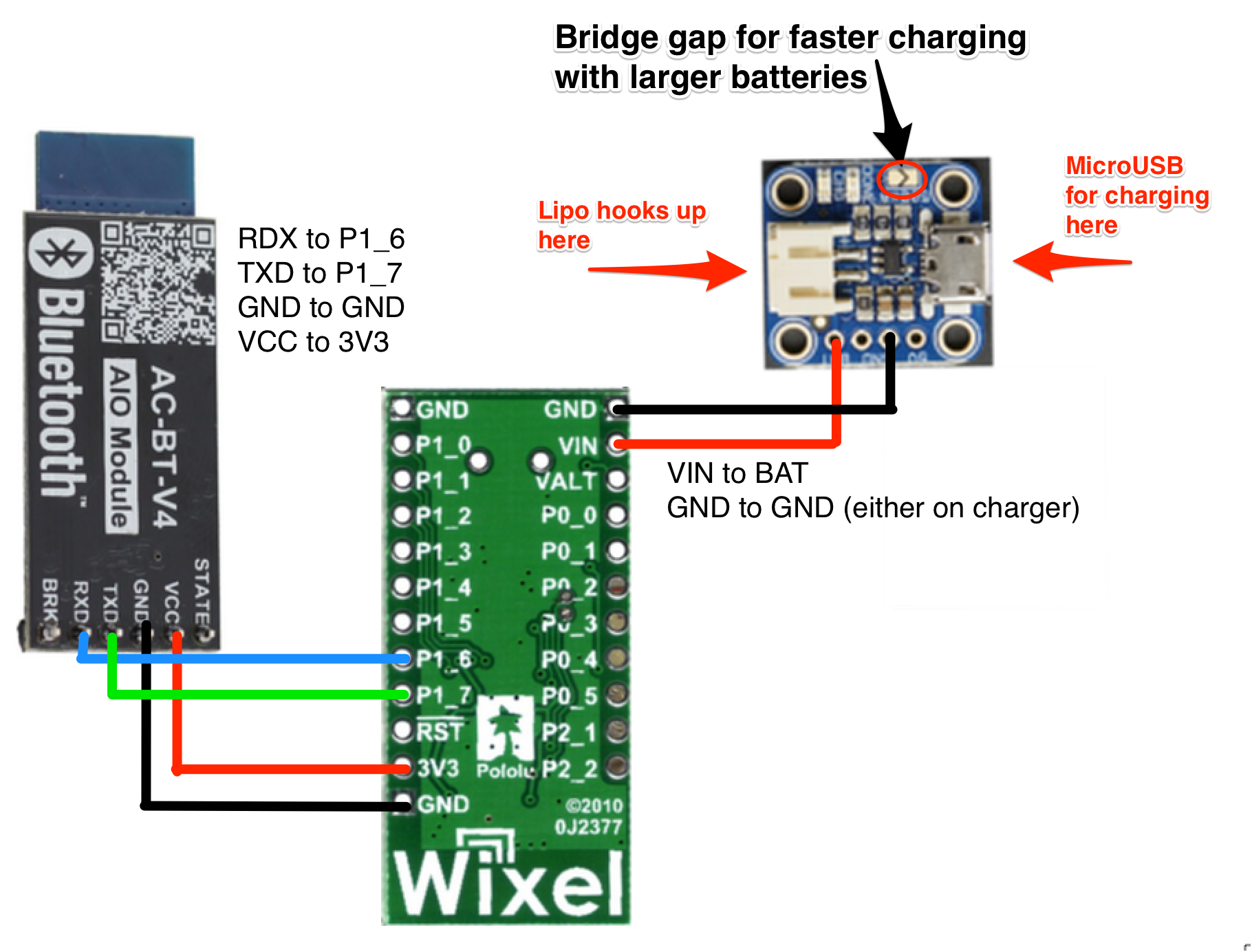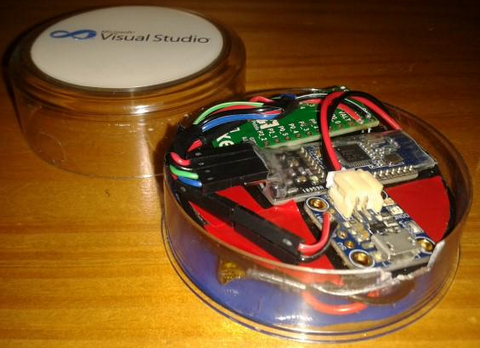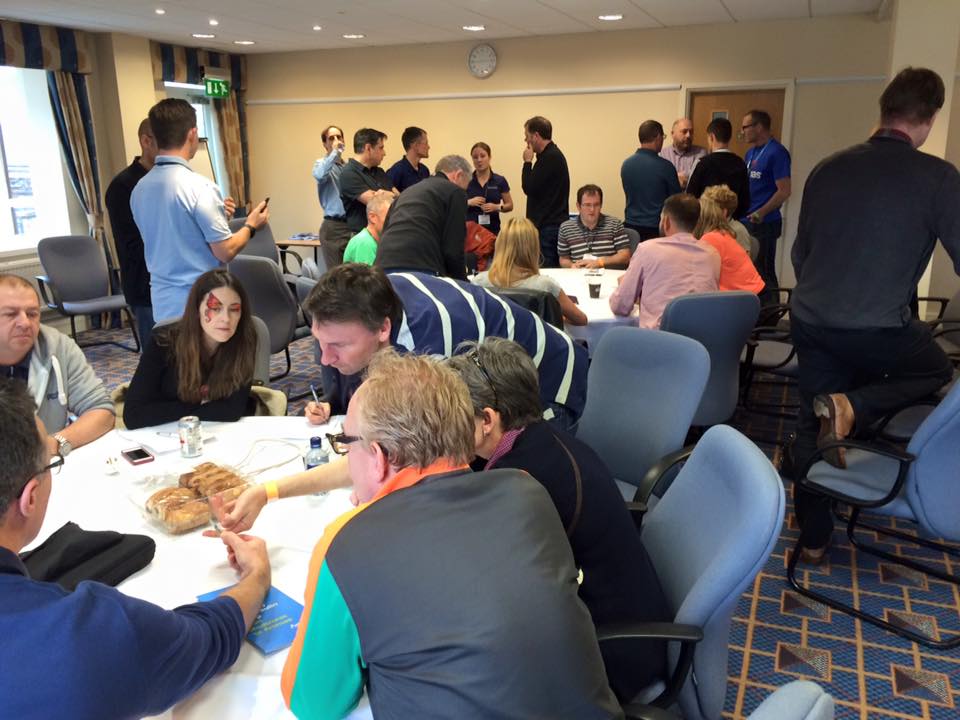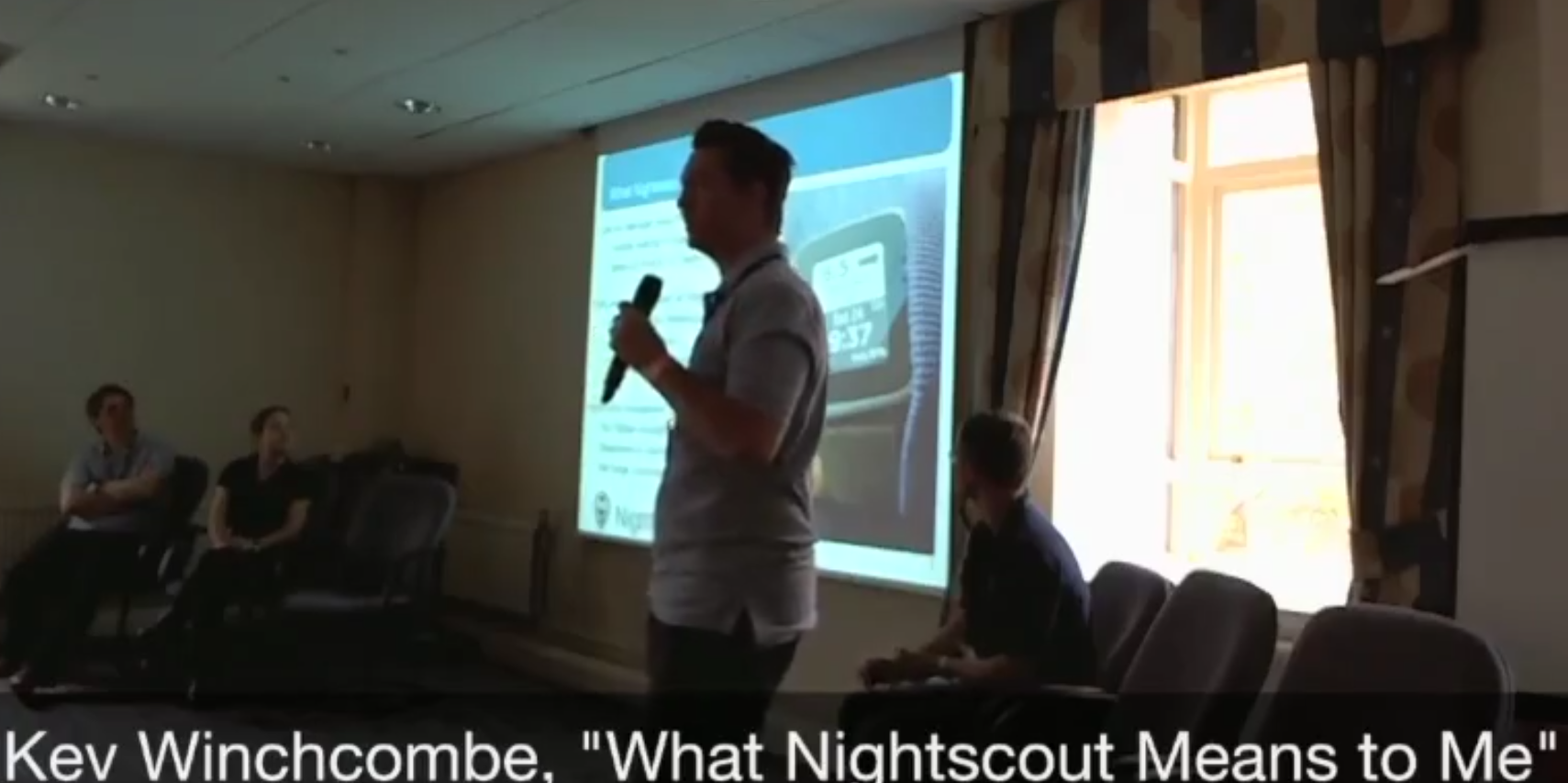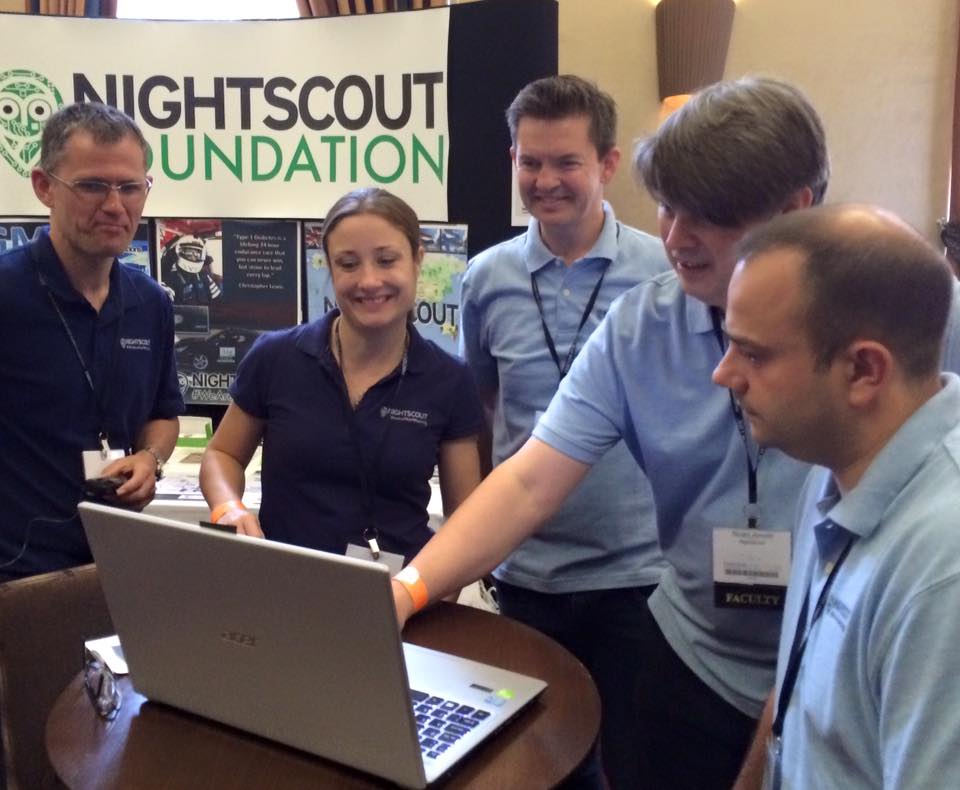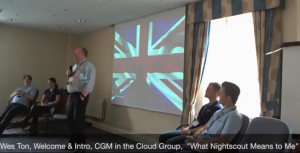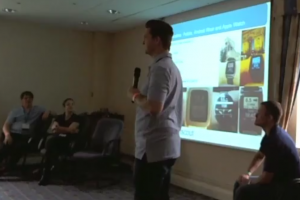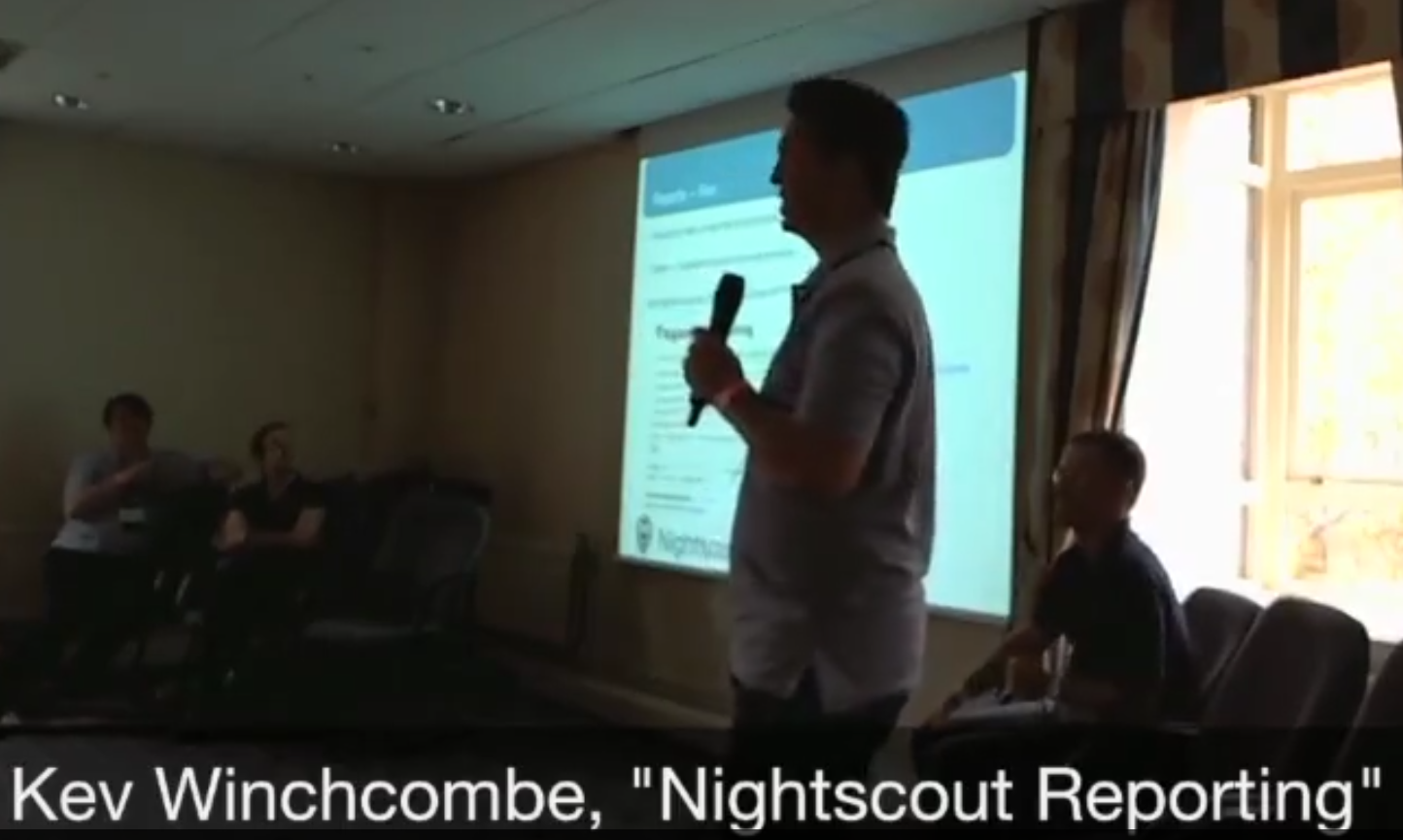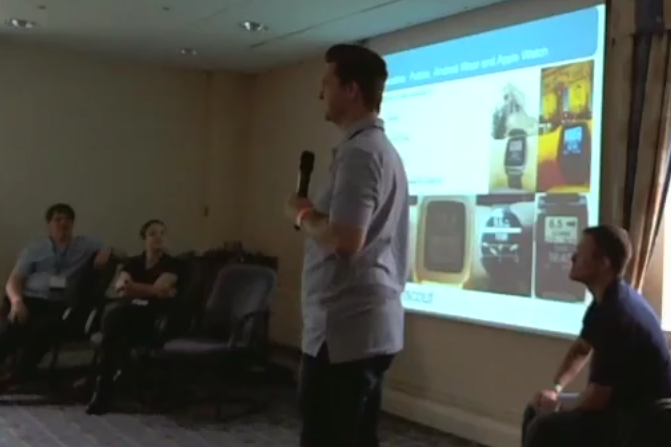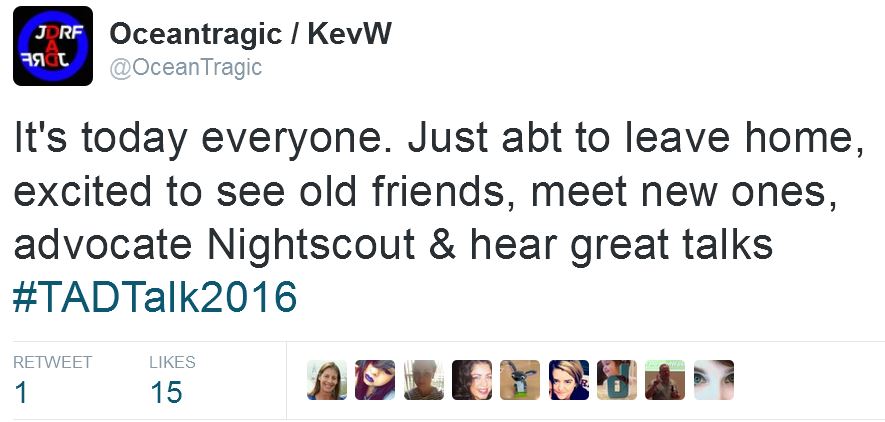 Once again the Stupid o’Clock alarm rang again and a quick check of Twitter told me that I wasn’t the only one awake and excited that today was the first ever UK day of TED style talks from people who live with Diabetes.
Once again the Stupid o’Clock alarm rang again and a quick check of Twitter told me that I wasn’t the only one awake and excited that today was the first ever UK day of TED style talks from people who live with Diabetes.
I was going for three reasons.
First and foremost was to meet everyone, some I’d met before, others I’ve spoken to for years and would meet for the first time. I was excited to meet Sarah (the UK’s hardest working Nightscout support person), Rob who’d travelled from darkest beyond and Anne who was one of the speakers. On top of them there were probably another 3 dozen I was looking forward to chatting with. But first it was off to meet (for the first time) Amber who we were giving a lift to – I’d worked with Amber’s Mum for 20 years and never knew she lived with T1 until Amy was diagnosed. 17 year old Amber’s relatively new to the community, go and say hello on Twitter.
Second was to listen to some great talks, four of which were from people I knew quite well from SocialMedia or indeed Real Life.
Last but definitely not least was because I was part of the Nightscout faculty, present there to be on the special stand we’d been allowed to have, to allow us to help attendees understand more about Nightscout.
The talks
Strangely, for a blog about a Talking About Diabetes event, I’m not going to talk about the talks themselves. Others have already done this through their blogs. Here’s Amber’s, here’s James’s, here’s Matt’s and here’s Anne’s.
Saving the last word for one of the organisers of this event, Here’s Dr Partha Kar’s blog.
Instead I’ll focus on Wes’s talk as it’s very dear to my heart.
Listening with a lump in my throat – The Nightscout Story
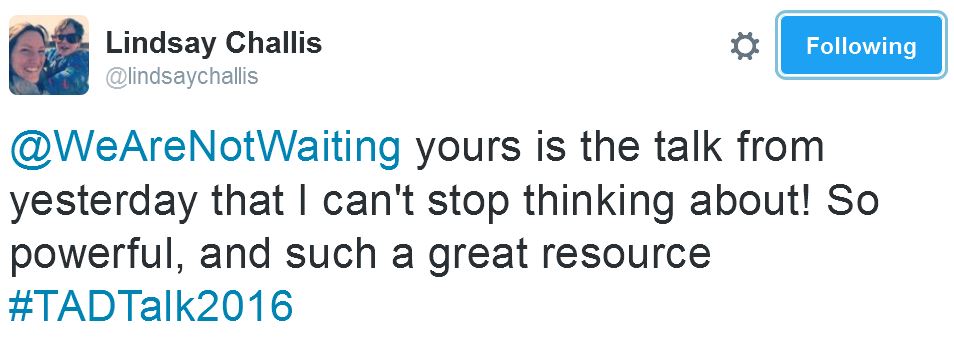 Wes’s Nightscout story started in an unfamiliar way for me, he was taking us way, way back to Picadilly Circus in 1966, the start of events leading to the birth of Lane Desborough who is dubbed The Grandfather of Nightscout – great video of Lane talking about Nightscout here if you’re interested. Lane went on to develop monitoring software which led to the backbone of the Nightscout web sites people like us use.
Wes’s Nightscout story started in an unfamiliar way for me, he was taking us way, way back to Picadilly Circus in 1966, the start of events leading to the birth of Lane Desborough who is dubbed The Grandfather of Nightscout – great video of Lane talking about Nightscout here if you’re interested. Lane went on to develop monitoring software which led to the backbone of the Nightscout web sites people like us use.
I already had a lump in my throat, especially because I knew at some point soon in Wes’s talk his story would get the better of him and the rawness of emotion would come through. You could feel it in the audience who at this stage hadn’t quite worked out what Nightscout really was.
 Wes progressed to the Nightscout story quite familiar to me – due to the presentations I’ve been giving to JDRF, Diabetes and the CYP NW Network – from the beginnings from the “7 guys on the internet” who thought “maybe 50 families” might be interested in setting up Nightscout. Less than two years later 16000 people are in the largest T1 Facebook group in the World, with 6000 more in the 27 country specific Nightscout groups around the world.
Wes progressed to the Nightscout story quite familiar to me – due to the presentations I’ve been giving to JDRF, Diabetes and the CYP NW Network – from the beginnings from the “7 guys on the internet” who thought “maybe 50 families” might be interested in setting up Nightscout. Less than two years later 16000 people are in the largest T1 Facebook group in the World, with 6000 more in the 27 country specific Nightscout groups around the world.
Building on the lumps in peoples’ throats Wes gave more reasons why Nightscout is so important to so many people and spoke about the only ‘cost’ to a person taking on Nightscout, that ‘cost’ being to Pay It Forward and help others. From my side it’s truly a great community, everyone is there to help others and everything is open.
Open Source.
Open Data.
Open Hearts.
Wes gave good praise to the UK’s Nightscout Faculty – which I’m proud to be a part of – and to Tim Omer for his excellent work on OpenAPS and HAPP (although Wes accidentally said ‘xDrip’ by mistake).
Nightscout Stand
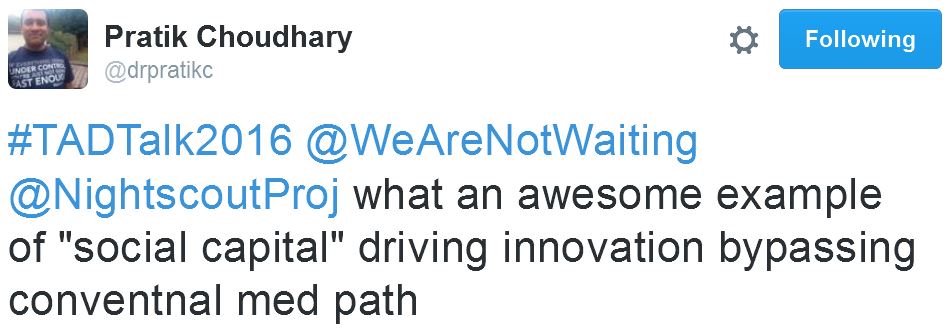 One of the highlights of being on the stand was when Pratik approached me with his team and asked for a quick run down on Nightscout, so that he could understand what his patients might be using or need to know.
One of the highlights of being on the stand was when Pratik approached me with his team and asked for a quick run down on Nightscout, so that he could understand what his patients might be using or need to know.
The stand was really busy and I spent all lunch time chatting with those who knew nothing about Nightscout, or those who knew loads but had some questions, some who were struggling with issues, some who were struggling with the concepts, some who were just interested in my family’s use of Nightscout. I was pleased to introduce James to Matt for help on his project, and to signpost people to certain web sites.
If only I’d had the time to eat any lunch!
We need to talk about H
Oh. My. God.
I’ve never felt so embarrassed.
She approached the stand by herself about the same time as Pratik and I turned my attention to him (bad move Kev!) for what I thought was a quick ‘Hi’ but turned into something much longer.
After waiting a while she said ‘I’ll come back later’, I still didn’t recognise her or know her name at that point.
During the afternoon talks I looked around and saw her sat next to Izzy and it suddenly dawned on me who was there at the stand earlier and a pang of guilt ran through me.
Hannah, damn, it was Hannah.
Hannah, the lovely young girl from OopNorf who advocates so well, whose blogged I’ve read for ages, with whom I spoken on Twitter for years, with whom I’ve spoken via Google Hangouts, whom I’d never met.
Hannah, if you’re reading this: sorry, what a twerp I am but I’m so glad you came back to say hello again.
Chatting with the reps
With more talks during the after and some question time later I managed to grab a coffee and chat with Jenny from Abbott about the London Planetarium sleepover happending that night, an event Amy and I had been invited to but had declined. Hopefully there’ll be a few guest blogs on site, coming out of that event and use of Libre. I managed to sort out a trial for Amy – which she’d previously shown interest in – so watch this space for a Libre write up from us.
What a great event
It’s hard to imagine how TAD could have been any better and if it’s run again it’s hard to imagine who could be chosen to match the great line up of this year’s speakers.
To the Doctors who set this up, Partha, Catherine, Peter, I want to thank you, it was truly a brilliant day out and a great opportunity to meet friends and help others.


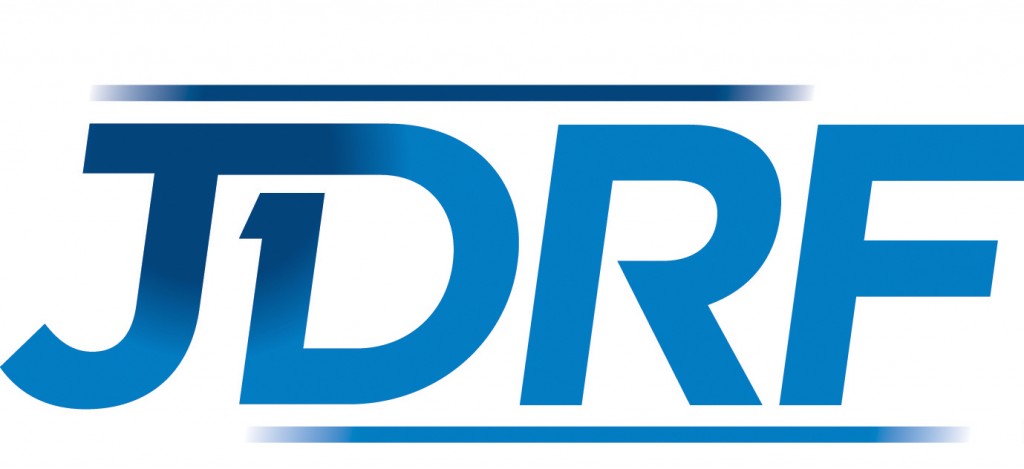 “Call me Kath” said Professor Barnard when I introduced her to Amy and Jane. Moments before I’d wished the earth would swallow me up as moments before that Kath had recognised me (from Social Media avatars/photos) and I hadn’t recognised her. A tad embarrasing and not the best first encounter. Still we we’re lucky that Kath could make it to the event as years ago I was almost responsible for her untimely death, after telling her how simple it was to replace a broken dimmer switch. Turns out it is simple if you’ve done it loads of times, not so simple if you haven’t. Anyway, I was pleased I hadn’t killed Kath and I’ll be careful not to discuss electrics with anyone else ever again.
“Call me Kath” said Professor Barnard when I introduced her to Amy and Jane. Moments before I’d wished the earth would swallow me up as moments before that Kath had recognised me (from Social Media avatars/photos) and I hadn’t recognised her. A tad embarrasing and not the best first encounter. Still we we’re lucky that Kath could make it to the event as years ago I was almost responsible for her untimely death, after telling her how simple it was to replace a broken dimmer switch. Turns out it is simple if you’ve done it loads of times, not so simple if you haven’t. Anyway, I was pleased I hadn’t killed Kath and I’ll be careful not to discuss electrics with anyone else ever again.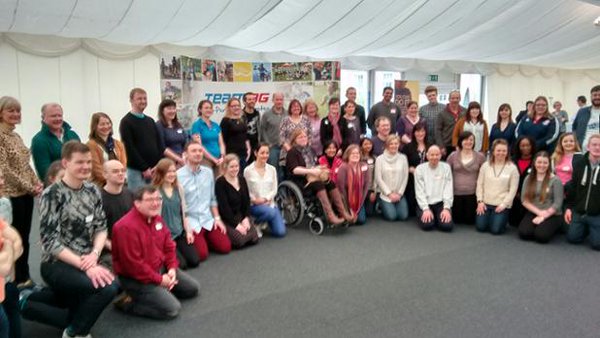 Last year’s
Last year’s  After finding my Saturday event cancelled and disappointed that I could have attended the conference’s first day I couldn’t face the excitement on Twitter and decided to I needed to distance myself. So I positioned myself up one of my apple trees to give it a little prune, I think I may have overdone it as it took all day.
After finding my Saturday event cancelled and disappointed that I could have attended the conference’s first day I couldn’t face the excitement on Twitter and decided to I needed to distance myself. So I positioned myself up one of my apple trees to give it a little prune, I think I may have overdone it as it took all day.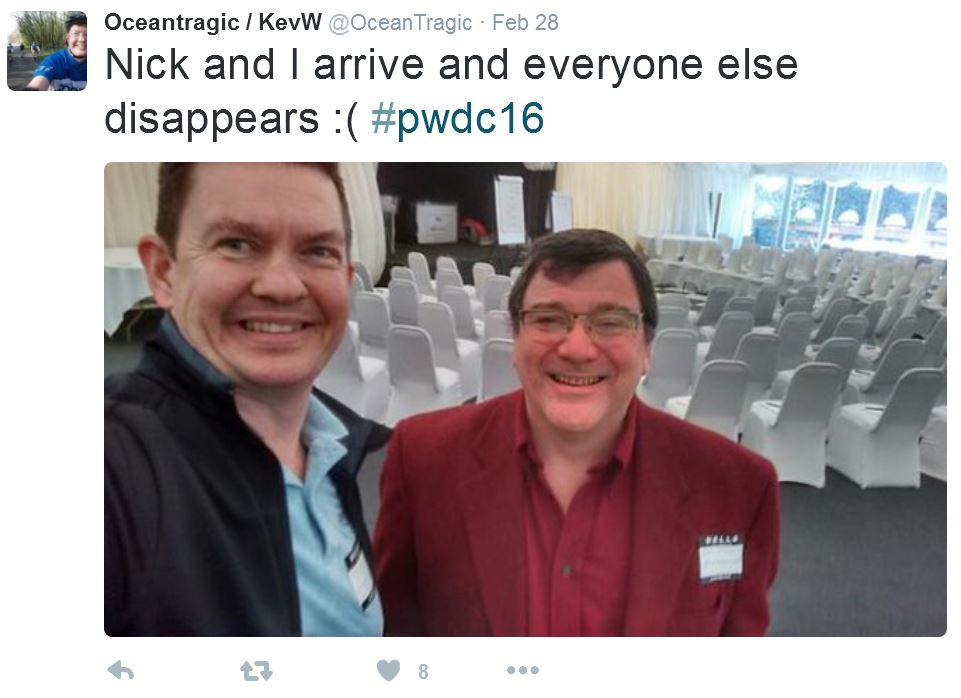

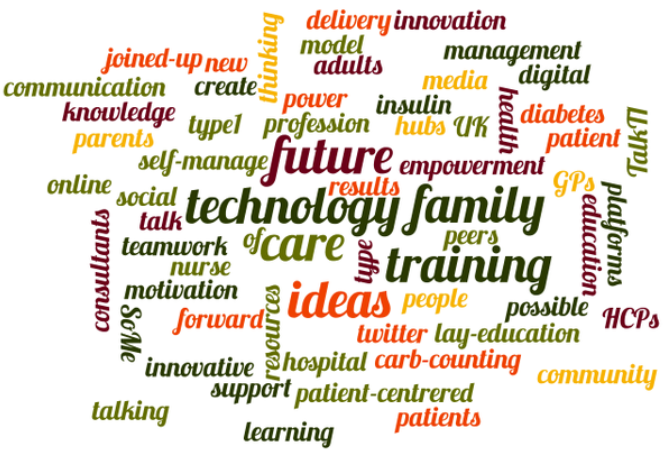 From a small seed of an idea Dr Partha Kar has created something which has grown so well, so quickly and has so much potential to bloom into something great. He suggested a day where some of the UK’s top Diabetes professionals would gather together and talk about Type 1 and come up with ideas how to deliver care for it better. They responded in droves, pretty much everyone said yes and a date was agreed, Saturday 16th January.
From a small seed of an idea Dr Partha Kar has created something which has grown so well, so quickly and has so much potential to bloom into something great. He suggested a day where some of the UK’s top Diabetes professionals would gather together and talk about Type 1 and come up with ideas how to deliver care for it better. They responded in droves, pretty much everyone said yes and a date was agreed, Saturday 16th January.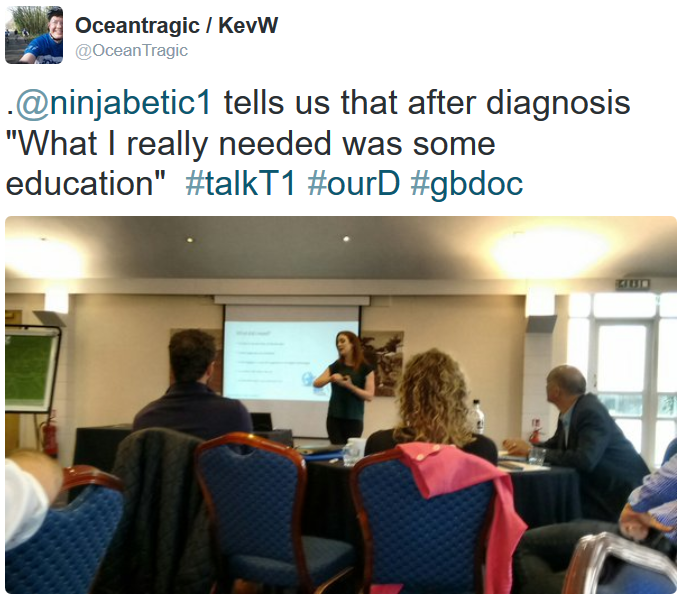 My nerves were settled a little being amongst friends with Mike (
My nerves were settled a little being amongst friends with Mike ( Jens from Diabetes Carefinder was up next and spoke about how care is so disjointed, we certain care being here, certain care being there and generally leaving the PWD like they are being here, there and everywhere. Jens has highlighted the need to see which services are offered by which practice too as it turned out he was going miles to get a service which could be delivered effectively next-door. It all seemed a bit mad when he explained it but being the parent of a child with Type 1 it’s not something we experience that much.
Jens from Diabetes Carefinder was up next and spoke about how care is so disjointed, we certain care being here, certain care being there and generally leaving the PWD like they are being here, there and everywhere. Jens has highlighted the need to see which services are offered by which practice too as it turned out he was going miles to get a service which could be delivered effectively next-door. It all seemed a bit mad when he explained it but being the parent of a child with Type 1 it’s not something we experience that much. Mike was last, no doubt Partha was saving the best and all that. It was the first time I’d met Mike in person and it was no surprise to me what a lovely bloke he was, easy to get on with, eager to help and it turns out really good at presenting. Mike explained his involvement with the production of the most recent NICE guidelines which took years to produce. He explained the importance of the guidelines and I changed my view from one of ambivalence to one of thankfulness.
Mike was last, no doubt Partha was saving the best and all that. It was the first time I’d met Mike in person and it was no surprise to me what a lovely bloke he was, easy to get on with, eager to help and it turns out really good at presenting. Mike explained his involvement with the production of the most recent NICE guidelines which took years to produce. He explained the importance of the guidelines and I changed my view from one of ambivalence to one of thankfulness.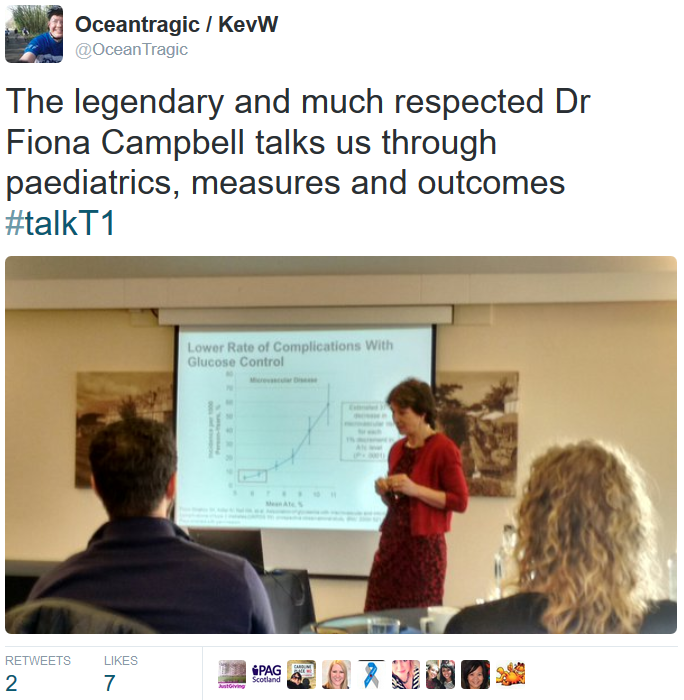 Professor Simon Heller and Dr Fiona Campbell each presented some great statistics, progress and thoughts setting the scene for what was to follow. Prof Heller explained about factors which affect poor UK outcomes and I was pleased to see the acknowledgement ‘poor availability and uptake of high quality structured training’. He concluded in the end that ‘we could do better’ which I thought was a little hard hitting to an audience of people who really care, but the nods in the audience confirmed they already knew it.
Professor Simon Heller and Dr Fiona Campbell each presented some great statistics, progress and thoughts setting the scene for what was to follow. Prof Heller explained about factors which affect poor UK outcomes and I was pleased to see the acknowledgement ‘poor availability and uptake of high quality structured training’. He concluded in the end that ‘we could do better’ which I thought was a little hard hitting to an audience of people who really care, but the nods in the audience confirmed they already knew it.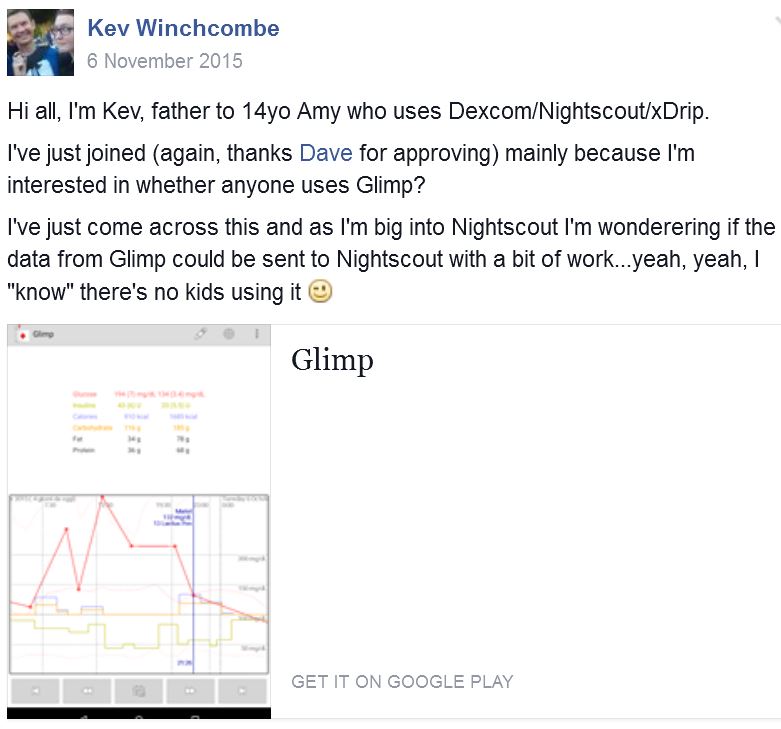
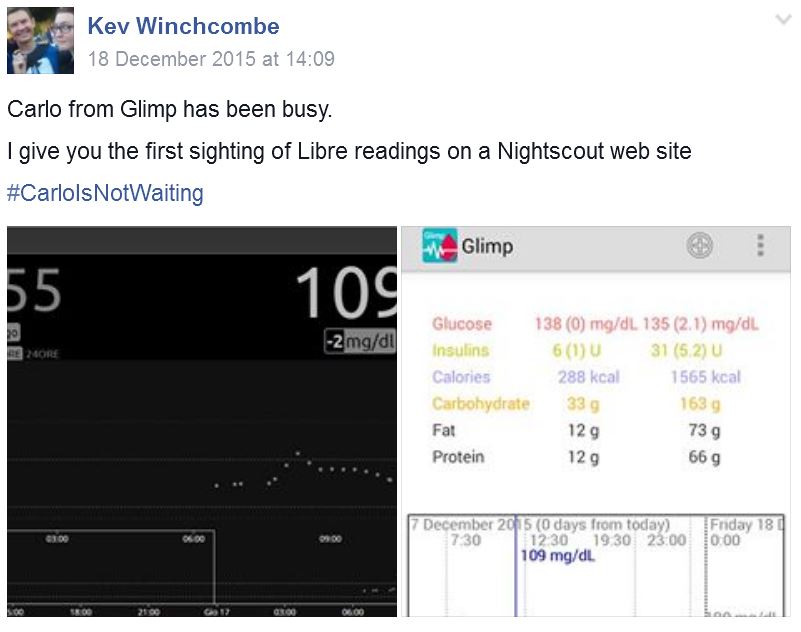
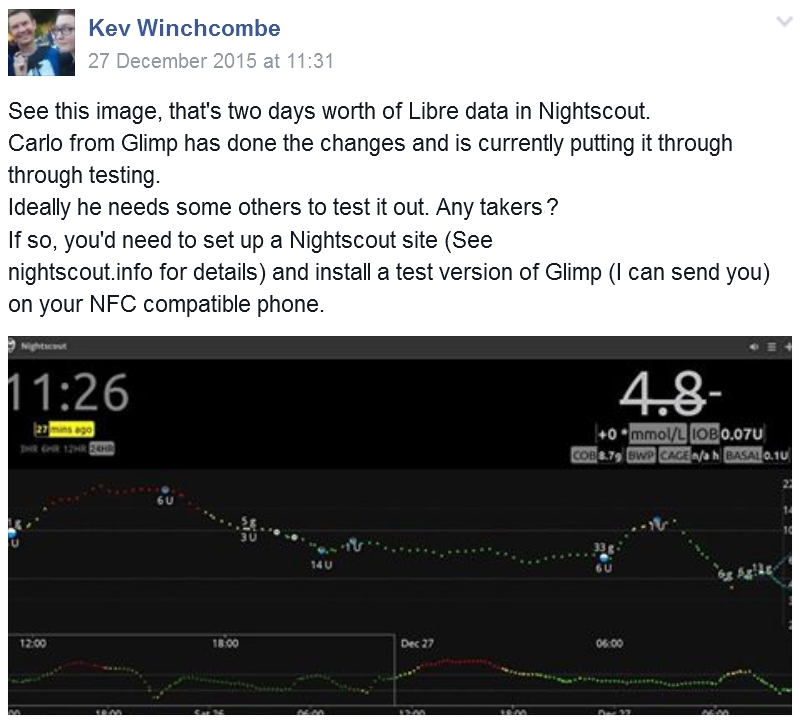

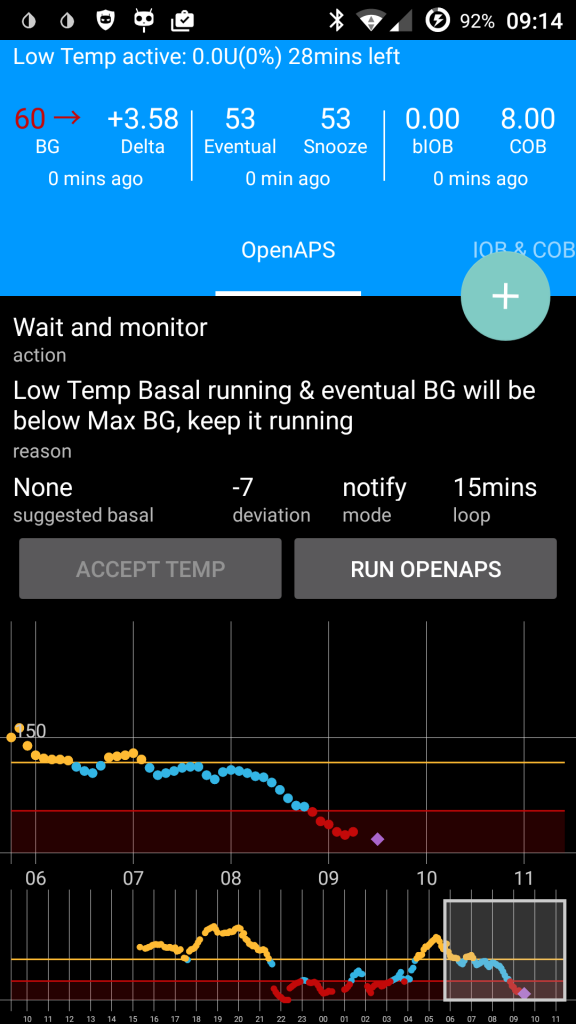
 Through INPUT Diabetes I got a chance to get to see the Palace of Westminster for the first time AND talk about diabetes tech to anyone prepared to listen. Two birds, one stone, what could have been better. Well actually I attended another great event afterwards too – blog coming soon – , so three birds, one stone, if that’s a thing.
Through INPUT Diabetes I got a chance to get to see the Palace of Westminster for the first time AND talk about diabetes tech to anyone prepared to listen. Two birds, one stone, what could have been better. Well actually I attended another great event afterwards too – blog coming soon – , so three birds, one stone, if that’s a thing.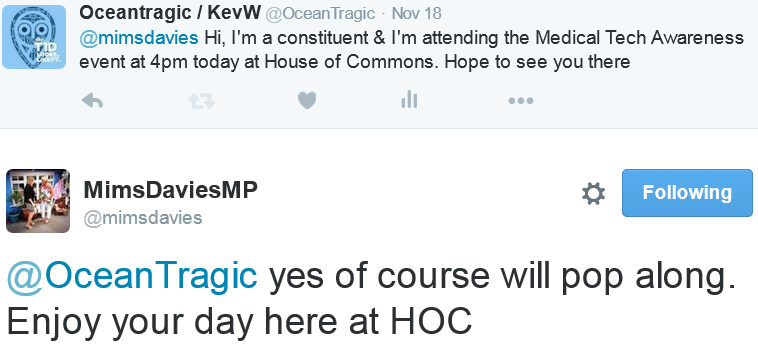


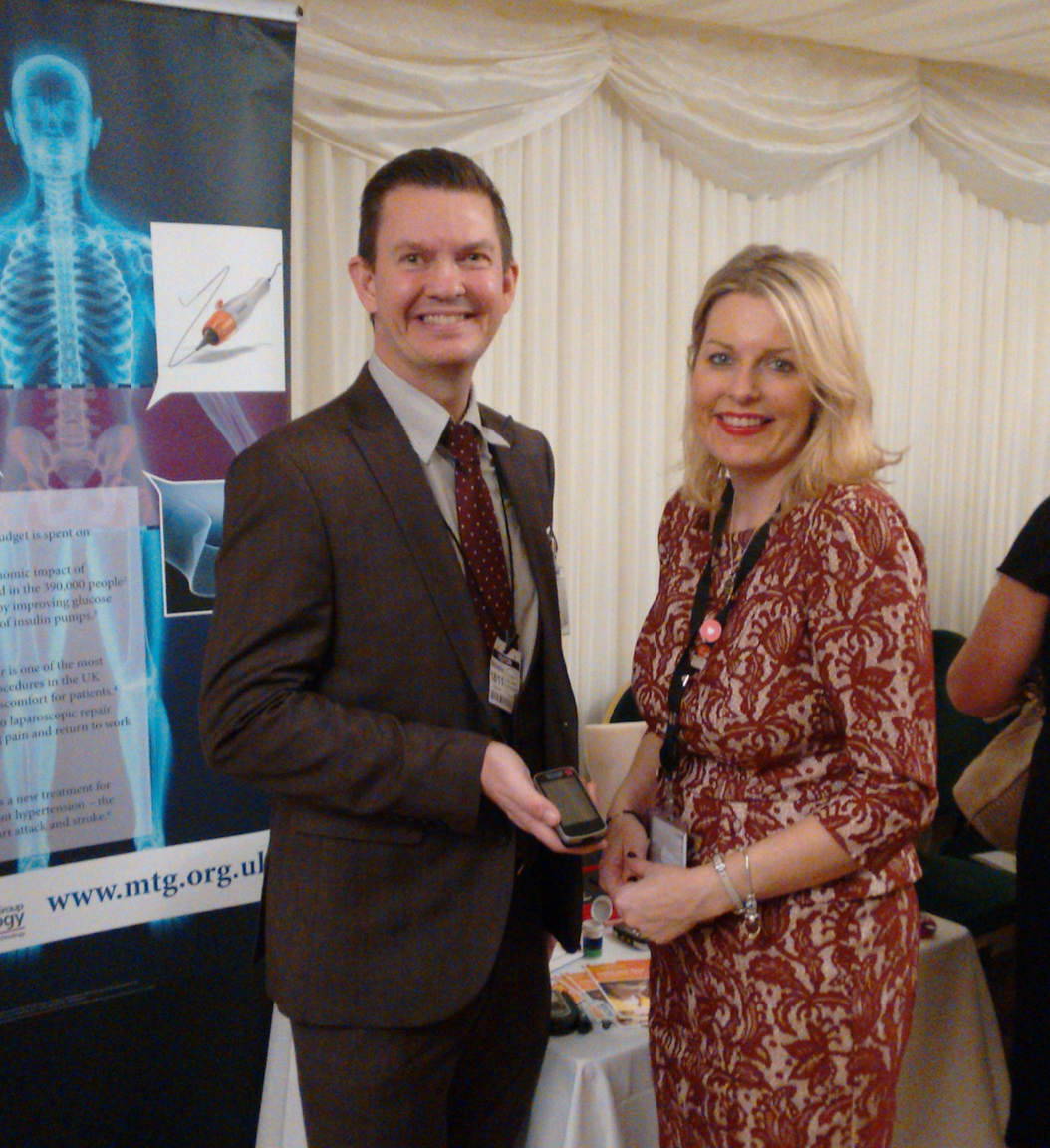 My MP, Mim Davies, returned for a chat and we spent a long time talking about the medical tech which is life changing for Amy, how we get some of it from the NHS and how we self fund CGM. I couldn’t help but show her Amy’s glucose readings on my Pebble watch and go into (probably too much) detail about how Nightscout is an unfunded parent driven group with 15000 worldwide families using Open Source software. Mim seemed quite impressed with the whole thing. We chatted in general about Type 2 Diabetes as through my research I knew Mim had recently met with Jamie Oliver about the sugar tax proposal and I mentioned that this would cost people with Type 1 Diabetes more as sugary drinks are also life saving medicine when hypo.
My MP, Mim Davies, returned for a chat and we spent a long time talking about the medical tech which is life changing for Amy, how we get some of it from the NHS and how we self fund CGM. I couldn’t help but show her Amy’s glucose readings on my Pebble watch and go into (probably too much) detail about how Nightscout is an unfunded parent driven group with 15000 worldwide families using Open Source software. Mim seemed quite impressed with the whole thing. We chatted in general about Type 2 Diabetes as through my research I knew Mim had recently met with Jamie Oliver about the sugar tax proposal and I mentioned that this would cost people with Type 1 Diabetes more as sugary drinks are also life saving medicine when hypo. This weekend saw Jane and I go away for the first time without the kids, celebrating Jane’s 50th birthday with a surprise weekend to Paris. Amy, Emilia and I had been planning this for ages, they were both happy to be left alone, probably happier than I was feeling about it if I’m honest. At almost 18 and almost 15 Emilia and Amy were more than capable of looking after themselves, Type 1 issues aside.
This weekend saw Jane and I go away for the first time without the kids, celebrating Jane’s 50th birthday with a surprise weekend to Paris. Amy, Emilia and I had been planning this for ages, they were both happy to be left alone, probably happier than I was feeling about it if I’m honest. At almost 18 and almost 15 Emilia and Amy were more than capable of looking after themselves, Type 1 issues aside.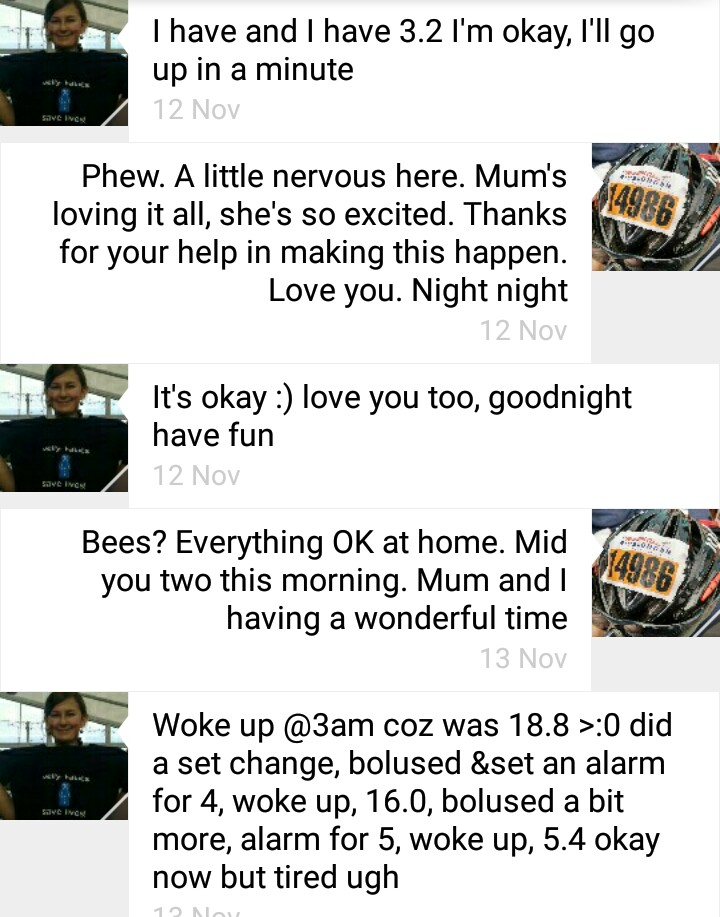
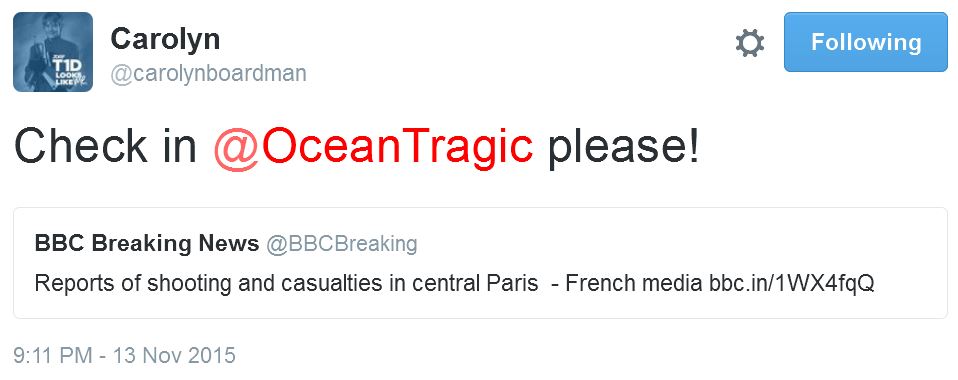



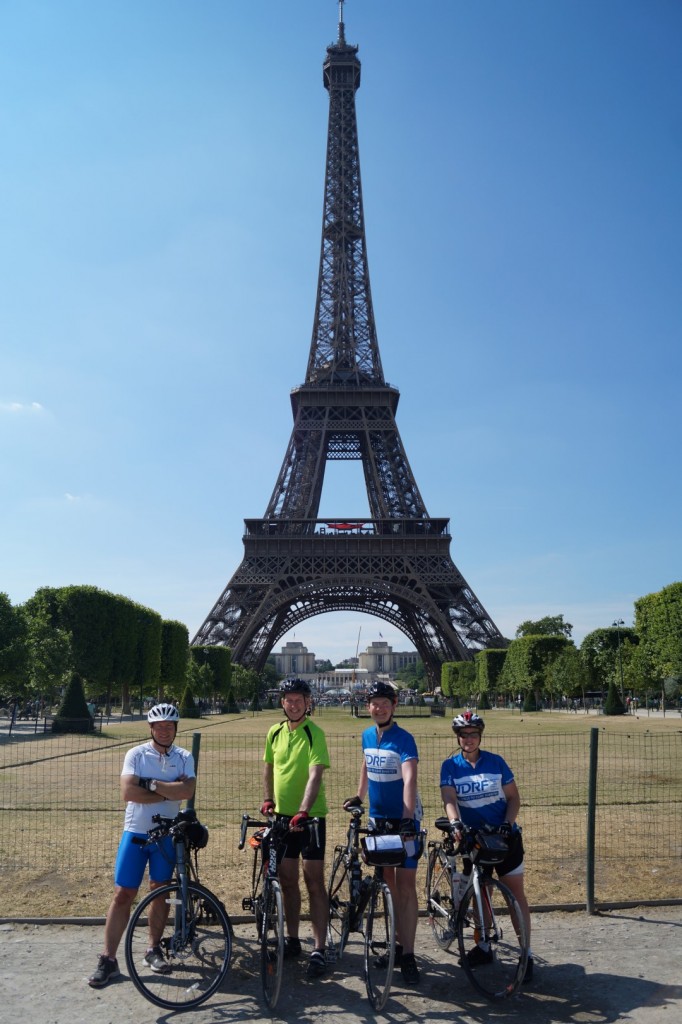

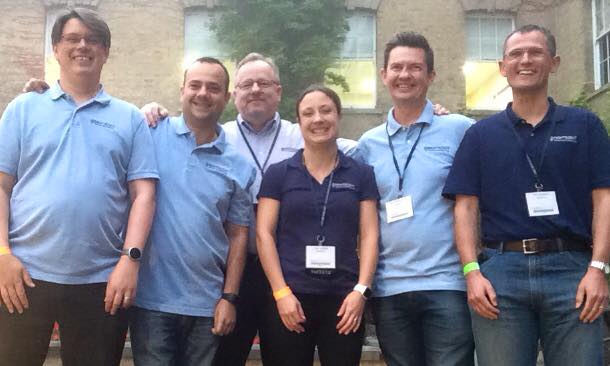 It seems the afternoon session was the only one actually listed in the FFL programme so we had more people, about 30, attending.
It seems the afternoon session was the only one actually listed in the FFL programme so we had more people, about 30, attending.